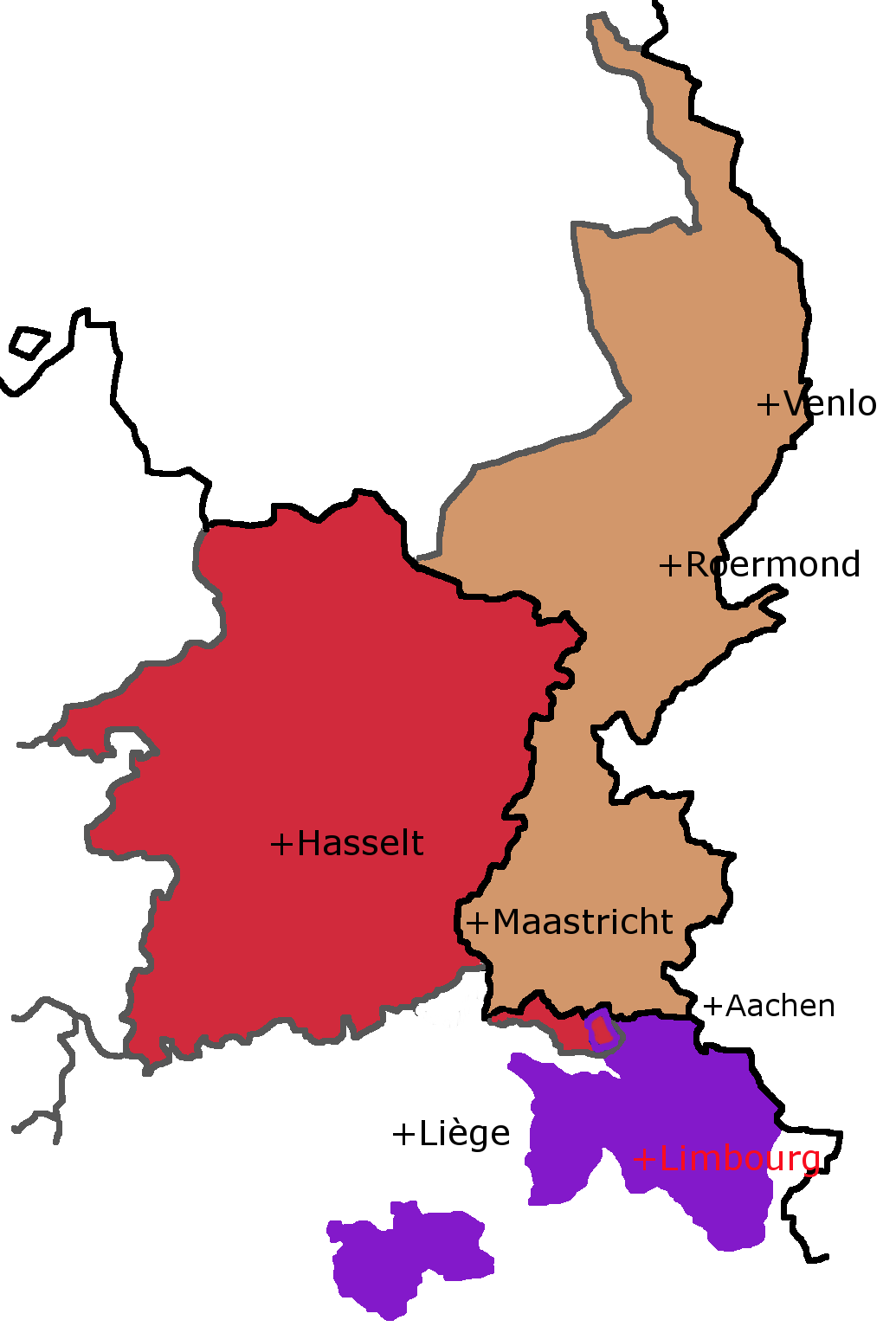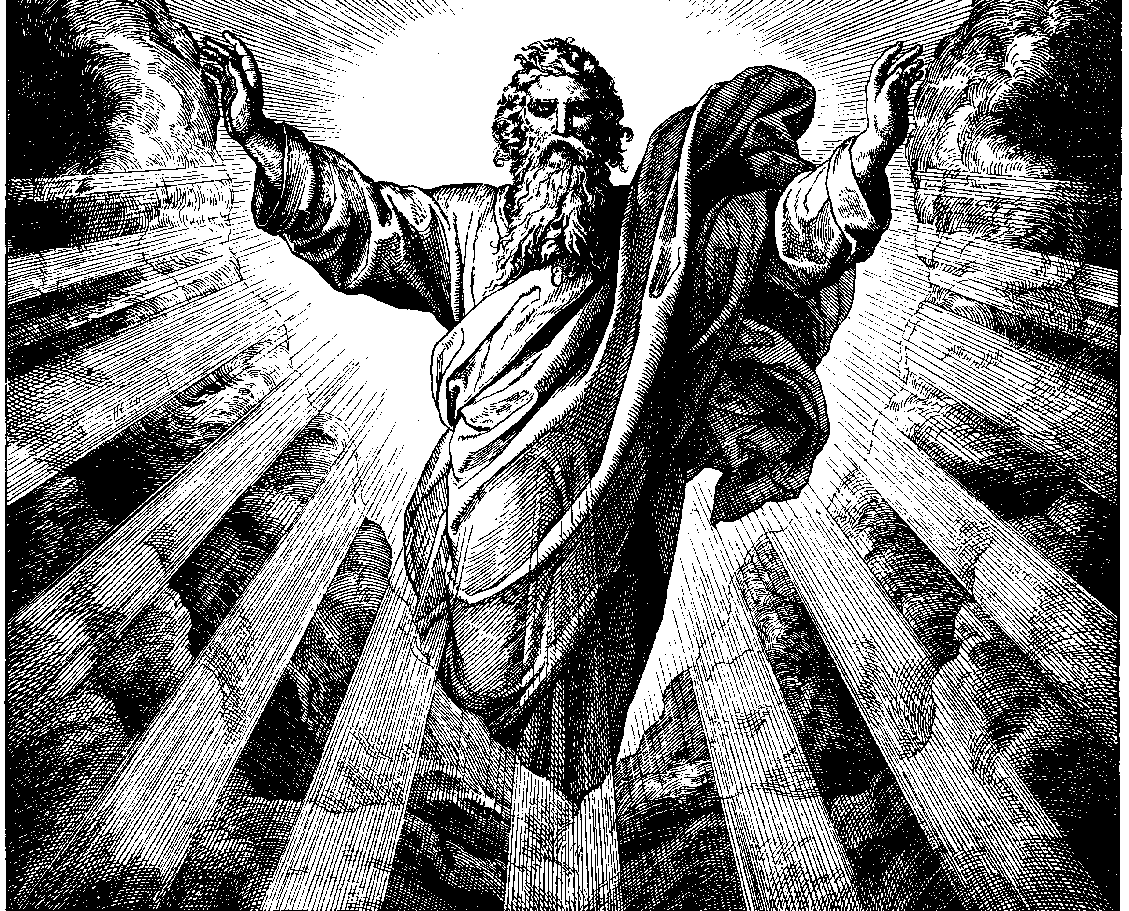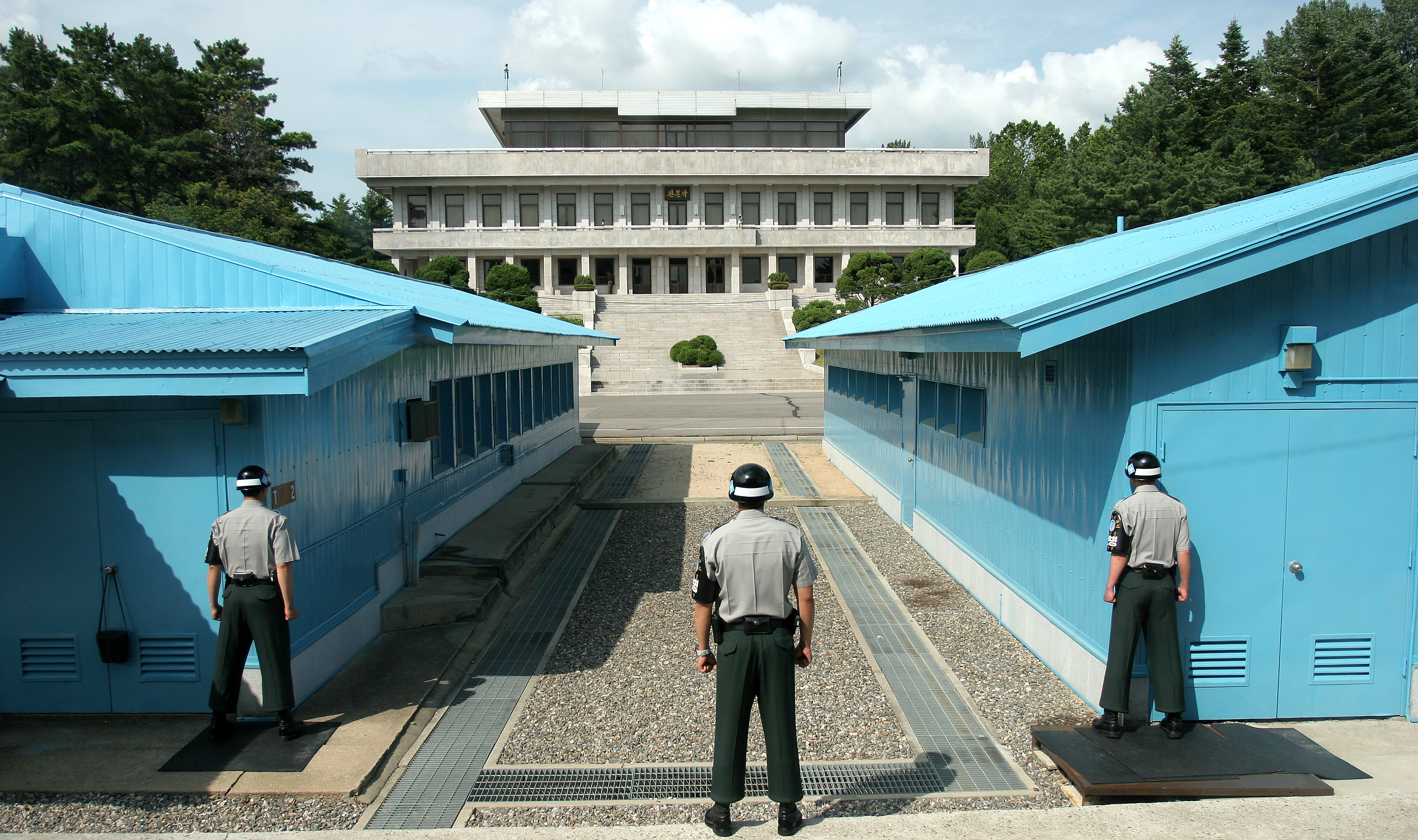|
Roman Catholic Diocese Of Roermond
The Diocese of Roermond () is a diocese of the Latin Church of the Catholic Church, located in the Netherlands. The diocese is one of the seven suffragan dioceses in the ecclesiastical province of the Metropolitan Archbishop of Utrecht. The territory of the diocese covers the Province of Limburg. Its cathedral episcopal see is the Cathedral of St. Christopher in Roermond. Its main pilgrimage sites are and Valkenburg. The Dean of Roermond is responsible for the parishes in that city and a few other municipalities in the diocese. History Originally established on 12 May 1559, on territories split off from the Metropolitan Archdiocese of Cologne (Keulen, now in Germany) and Diocese of Liège (Luik, now in Belgium). During the Napoleonic era, on 1801.07.15 it lost territory to establish the Apostolic Vicariate of Grave–Nijmegen, on 1801.11.29 the diocese was suppressed, its territory being divided between the above vicariate and to establish the (German) Diocese of ... [...More Info...] [...Related Items...] OR: [Wikipedia] [Google] [Baidu] |
Limburg (Netherlands)
Limburg (; ), also known as Dutch Limburg, is the southernmost of the twelve provinces of the Netherlands. It is bordered by Gelderland to the north and by North Brabant to the west. Its long eastern boundary forms the border with the German state of North Rhine-Westphalia. To the west is the border with the Belgian province of Limburg, part of which is delineated by the river Meuse. To the south, Limburg is bordered by the Belgian province of Liège. The Vaalserberg is the extreme southeastern point, the tripoint of the Netherlands, Germany, and Belgium. Limburg had a population of about 1,128,000 in January 2023. Its main municipalities are the provincial capital Maastricht (population 120,837 as of January 2022), Venlo (population 102,176) in the northeast, as well as Sittard-Geleen (population 91,760, bordering both Belgium and Germany) and Heerlen (population 86,874) in the south. More than half of the population, approximately 650,000 people, live in the south of Limb ... [...More Info...] [...Related Items...] OR: [Wikipedia] [Google] [Baidu] |
Roermond Kathedraal Interieur
Roermond (; or ) is a city, municipality, and diocese in the Limburg province of the Netherlands. Roermond is a historically important town on the lower Roer on the east bank of the river Meuse. It received town rights in 1231. Roermond's town centre has become a designated conservation area. Through the centuries, the town has filled the role of commercial centre and a principal town in the duchy of Guelders. Since 1559, it has served as the seat of the Roman Catholic Diocese of Roermond. The skyline of the town is dominated by the towers of its two churches, St. Christopher's Cathedral and Roermond Minster ("Munsterkerk" in Dutch). In addition to the churches, the town centre has many significant buildings and monuments. History Celtic inhabitants of this region used to live on both sides of the river Roer. Invading Romans built a bridge (now called the ''Steene Brök'', or stone bridge) and founded the first town at Roermond, now a suburb called Voorstad Sint Jacob. Gue ... [...More Info...] [...Related Items...] OR: [Wikipedia] [Google] [Baidu] |
Theist
Theism is broadly defined as the belief in the existence of at least one deity. In common parlance, or when contrasted with ''deism'', the term often describes the philosophical conception of God that is found in classical theism—or the conception found in monotheism—or gods found in polytheistic religions—or a belief in God or gods without the rejection of revelation, as is characteristic of deism. Non-theism and atheism is commonly understood as non-acceptance or outright rejection of theism in the broadest sense of the term (i.e., non-acceptance or rejection of belief in God or gods). Related (but separate) is the claim that the existence of any deity is unknown or unknowable; a stance known as agnosticism.(page 56 in 1967 edition) ''Agnostic theism'' is a personal belief in one or more deities along with acceptance that the existence or non-existence of the deity or deities is fundamentally unknowable. A 2020 ''Philpapers'' survey of professional philosophers found ... [...More Info...] [...Related Items...] OR: [Wikipedia] [Google] [Baidu] |
Mass (liturgy)
Mass is the main Eucharistic liturgical service in many forms of Western Christianity. The term ''Mass'' is commonly used in the Catholic Church, Western Rite Orthodoxy, Old Catholicism, and Independent Catholicism. The term is also used in many Lutheran churches, as well as in some Anglican churches, and on rare occasion by other Protestant churches. Other Christian denominations may employ terms such as '' Divine Service'' or '' worship service'' (and often just "service"), rather than the word ''Mass''. For the celebration of the Eucharist in Eastern Christianity, including Eastern Catholic Churches, other terms such as ''Divine Liturgy'', ''Holy Qurbana'', ''Holy Qurobo'' and ''Badarak'' (or ''Patarag'') are typically used instead. Etymology The English noun ''Mass'' is derived from the Middle Latin . The Latin word was adopted in Old English as (via a Vulgar Latin form ), and was sometimes glossed as ''sendnes'' (i.e. 'a sending, dismission'). The Latin term itself w ... [...More Info...] [...Related Items...] OR: [Wikipedia] [Google] [Baidu] |
Roman Catholic
The Catholic Church (), also known as the Roman Catholic Church, is the largest Christian church, with 1.27 to 1.41 billion baptized Catholics worldwide as of 2025. It is among the world's oldest and largest international institutions and has played a prominent role in the history and development of Western civilization. O'Collins, p. v (preface). The church consists of 24 ''sui iuris'' (autonomous) churches, including the Latin Church and 23 Eastern Catholic Churches, which comprise almost 3,500 dioceses and eparchies around the world, each overseen by one or more bishops. The pope, who is the bishop of Rome, is the chief pastor of the church. The core beliefs of Catholicism are found in the Nicene Creed. The Catholic Church teaches that it is the one, holy, catholic and apostolic church founded by Jesus Christ in his Great Commission, that its bishops are the successors of Christ's apostles, and that the pope is the successor of Saint Peter, upo ... [...More Info...] [...Related Items...] OR: [Wikipedia] [Google] [Baidu] |
Religious Affiliation
Religious identity is a specific type of identity formation. Particularly, it is the sense of group membership to a religion and the importance of this group membership as it pertains to one's self-concept. Religious identity is not necessarily the same as religiousness or religiosity. Although these three terms share a commonality, religiousness and religiosity refer to both the value of religious group membership as well as participation in religious events (e.g. going to church).Arweck, E. & Nesbitt, E. (2010). Young people's identity formation in mixed-faith families: continuity or discontinuity of religious traditions? ''Journal of Contemporary Religion'', 25, 67–87.King, V. Elder, G.H., Whitbeck, L.B. (1997). "Religious involvement among rural youth: An ecological and life-course perspective". ''Journal of Research on Adolescence'', 7, 431–456. Religious identity, on the other hand, refers specifically to religious group membership regardless of religious activity or parti ... [...More Info...] [...Related Items...] OR: [Wikipedia] [Google] [Baidu] |
Calvinism
Reformed Christianity, also called Calvinism, is a major branch of Protestantism that began during the 16th-century Protestant Reformation. In the modern day, it is largely represented by the Continental Reformed Christian, Presbyterian, Congregational, and Waldensians traditions, as well as parts of the Methodist, Anglican (known as "Episcopal" in some regions) and Baptist traditions. Reformed theology emphasizes the authority of the Bible and the sovereignty of God, as well as covenant theology, a framework for understanding the Bible based on God's covenants with people. Reformed churches emphasize simplicity in worship. Several forms of ecclesiastical polity are exercised by Reformed churches, including presbyterian, congregational, and some episcopal. Articulated by John Calvin, the Reformed faith holds to a spiritual (pneumatic) presence of Christ in the Lord's Supper. Emerging in the 16th century, the Reformed tradition developed over several genera ... [...More Info...] [...Related Items...] OR: [Wikipedia] [Google] [Baidu] |
Border
Borders are generally defined as geography, geographical boundaries, imposed either by features such as oceans and terrain, or by polity, political entities such as governments, sovereign states, federated states, and other administrative division, subnational entities. Political borders can be established through warfare, colonization, or mutual agreements between the political entities that reside in those areas. Some borders—such as most states' internal administrative borders, or inter-state borders within the Schengen Area—are open border, open and completely unguarded. Most external political borders are partially or fully controlled, and may be crossed legally only at designated border checkpoints; adjacent Border control#Border zones, border zones may also be controlled. For the purposes of border control, airports and Port#Seaport, seaports are also classed as borders. Most countries have some form of border control to regulate or limit the movement of people, animals ... [...More Info...] [...Related Items...] OR: [Wikipedia] [Google] [Baidu] |
Apostolic Vicariate
An apostolic vicariate is a territorial jurisdiction of the Catholic Church under a titular bishop centered in missionary regions and countries where dioceses or parishes have not yet been established. The status of apostolic vicariate is often a promotion for a former apostolic prefecture, while either may have started out as a mission sui iuris, mission ''sui iuris''. It is essentially provisional, though it may last for a century or more. The hope is that the region will generate sufficient numbers of Catholicism, Catholics for the Church to create a diocese one day. It is Exemption (Catholic canon law), exempt under canon law, directly subject to the missionary Dicastery for Evangelization of the Vatican in Rome. Like the stage of apostolic prefecture which often precedes it, the vicariate is not part of an ecclesiastical province. It is intended to mature in developing Catholic members until it can be promoted to a (usually suffragan) diocese. The Eastern Catholic and Ea ... [...More Info...] [...Related Items...] OR: [Wikipedia] [Google] [Baidu] |
Holy See
The Holy See (, ; ), also called the See of Rome, the Petrine See or the Apostolic See, is the central governing body of the Catholic Church and Vatican City. It encompasses the office of the pope as the Bishops in the Catholic Church, bishop of the apostolic see, apostolic episcopal see of Diocese of Rome, Rome, and serves as the spiritual and administrative authority of the worldwide Catholic Church and Vatican City. Under international law, the Legal status of the Holy See, Holy See holds the status of a sovereign juridical entity. According to Sacred tradition, Catholic tradition and historical records, the Holy See was founded in the first century by Saint Peter and Paul the Apostle, Saint Paul. By virtue of the doctrines of Primacy of Peter, Petrine and papal primacy, papal primacy, it is the focal point of full communion for Catholics around the world. The Holy See is headquartered in, operates from, and exercises "exclusive dominion" over Vatican City, an independent c ... [...More Info...] [...Related Items...] OR: [Wikipedia] [Google] [Baidu] |
Roman Catholic Diocese Of Aachen
The Diocese of Aachen () is a Latin diocese of the Catholic Church located in Germany and one of the six dioceses in the ecclesiastical province of Cologne. The incumbent bishop is Helmut Dieser, who was appointed by Pope Francis on 23 September 2016. The bishop's seat is Aachen. Geography The diocese is located in the very west of Germany, extending from Krefeld in the north to the mountainous Eifel area in the south. Bordering dioceses are Cologne, Münster, Essen and Trier in Germany, Liège in Belgium and Roermond in the Netherlands. The diocese is divided into seven regions which are in turn further subdivided into 538 parishesː # Region Aachen-Stadt (''Aachen city'') # Region Düren # Region Eifel # Region Heinsberg # Region Kempen Viersen # Region Krefeld # Region Mönchengladbach Ordinaries The bishop emeritus of Aachen is Heinrich Mussinghoff. There are two auxiliary bishops, Johannes Bündgens and Karl Borsch. Also, there are two emeritus auxiliary bishops, Gerd ... [...More Info...] [...Related Items...] OR: [Wikipedia] [Google] [Baidu] |
Apostolic Vicariate Of Grave–Nijmegen
The Apostolic Vicariate of Grave–Nijmegen was a short-lived (1801 - 1851) pre-diocesan Latin Catholic jurisdiction in southern parts of the present Netherlands (in North Brabant viz. Gelderland). History Established on 22 March 1803 as Apostolic Vicariate (in principle entitled to a (titular) bishop) of Grave–Nijmegen, on territory split off from the Diocese of Roermond in course of suppression (completed 29 November, when the remainder of the diocesan territory was added), to which its last Bishop was appointed. It was suppressed in 1851, its territory being merged into the Apostolic Vicariate of ’s-Hertogenbosch (now a diocese). Ordinaries (all Roman rite) ;''Apostolic Vicars of Grave–Nijmegen'' * Joannes van Velde de Melroy en Sart-Bomal (1801 – death 1824); previously last Suffragan Bishop of Diocese of Roermond (1794.02.21 – 1801.11.29) * Father Gerardus Hermans, Canons Regular of the Order of the Holy Cross (O.S.C.) (1824 – death 1840) * Fr. Henricus van ... [...More Info...] [...Related Items...] OR: [Wikipedia] [Google] [Baidu] |








